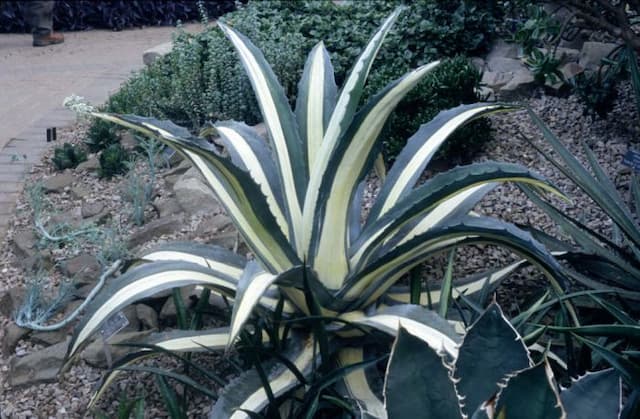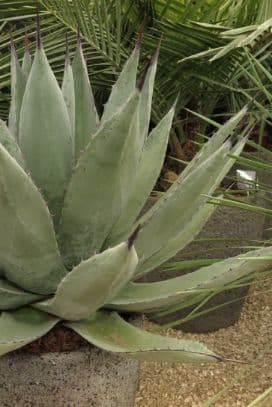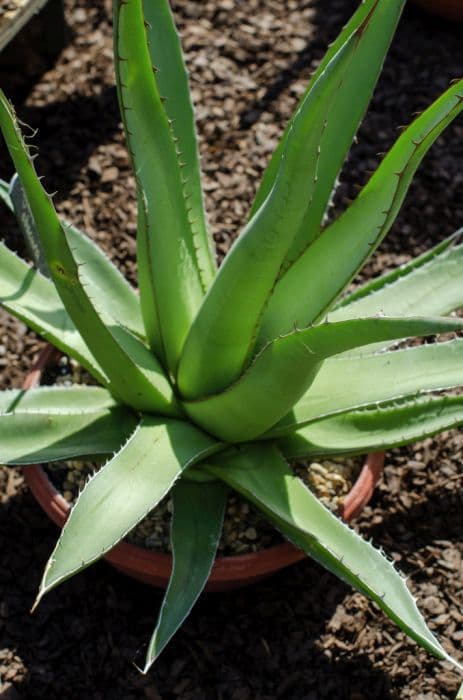Turkish Squill Scilla sardensis

ABOUT
Scilla sardensis, commonly known as Turkish squill, is a bulbous perennial noted for its striking spring blooms. The appearance of Turkish squill is marked by its vibrant blue, star-shaped flowers that emerge in dense clusters. Each individual flower is relatively small, with six pointed petals, creating a delicate and eye-catching display. The bloom stalks rise above the plant's foliage, which consists of narrow, glossy green leaves. The leaves are arranged in a basal rosette, directly emanating from the underground bulb from which the plant grows. As the flowering season progresses, the petals may fade slightly, but they remain a captivating feature in any garden setting where the Turkish squill is planted.
About this plant
 Names
NamesFamily
Asparagaceae
Synonyms
Turkish Squill
Common names
Scilla sardensis
 Toxicity
ToxicityTo humans
Scilla sardensis, commonly known as Turkish Squill, is considered to be toxic to humans if any part of the plant is ingested. The plant contains toxic compounds, including cardiac glycosides and other alkaloids which can be harmful. Symptoms of poisoning may include nausea, vomiting, diarrhea, and in severe cases, can lead to cardiac effects such as arrhythmias. It is crucial to avoid ingesting any part of the plant, and if ingestion occurs, seek medical attention promptly.
To pets
Turkish Squill, the common name for Scilla sardensis, is toxic to pets if ingested. The plant contains chemicals like cardiac glycosides which are harmful to animals. Symptoms of poisoning in pets can include vomiting, diarrhea, drooling, lethargy, and more severe signs such as cardiac arrhythmias or seizures. Immediate veterinary care should be sought if a pet is suspected to have ingested any part of the plant.
 Characteristics
CharacteristicsLife cycle
Perennials
Foliage type
Deciduous
Color of leaves
Green
Flower color
Blue
Height
4 inches (10 cm)
Spread
4 inches (10 cm)
Plant type
Bulb
Hardiness zones
8
Native area
Turkey
Benefits
 General Benefits
General Benefits- Ornamental Value: Scilla sardensis, commonly known as Turkish Squill, adds visual appeal to gardens with its vivid blue flowers that bloom in early spring.
- Pollinator Attraction: The flowers of the Turkish Squill attract bees and other pollinators, supporting biodiversity in the garden ecosystem.
- Low Maintenance: Turkish Squill is known for being hardy and requiring minimal care once established, making it a convenient choice for busy gardeners.
- Naturalizing: This plant has the ability to spread and naturalize over time, filling in spaces and creating a carpet of color with minimal intervention.
- Spring Interest: Adding early color to the garden, Turkish Squill is one of the first plants to bloom in spring, which can be uplifting after a long winter.
- Rock Gardens and Borders: Its compact growth habit makes it suitable for rock gardens, borders, and as an underplanting for taller species.
- Ground Cover: Turkish Squill can be used as a ground cover in shady areas where other plants might struggle to grow.
- Container Gardening: It is suitable for container gardening, allowing those with limited space to enjoy its beauty on patios, terraces, or balconies.
- Resistant to Pests: Generally, Turkish Squill is resistant to pests and diseases, making it a resilient addition to the garden.
- Companion Planting: It pairs well with other spring bulbs and perennials, creating a layered display of flowers throughout the season.
 Medical Properties
Medical Properties- This plant is not used for medical purposes.
 Air-purifying Qualities
Air-purifying QualitiesThis plant is not specifically known for air purifying qualities.
 Other Uses
Other Uses- Scilla sardensis bulbs can be ground to use in the making of natural glue due to their sticky properties when moistened.
- When used in flower arrangements, the distinctive blue flowers of Scilla sardensis can add a unique aesthetic and last for an extended period when cut.
- The flower's nectar and pollen can be a food source for early foraging bees and other pollinators emerging in spring.
- In thematic gardening, Scilla sardensis can be used to create a 'blue-themed' garden or to represent the colors of a national or sports team.
- The plant can serve an educational purpose for botany students studying bulbous plant structures and propagation methods.
- Scilla sardensis can be used in photography and art for its vibrant blue flowers, providing a rich subject matter for natural world representation.
- The plant may be used in cultural events or festivals that celebrate spring, such as in Easter floral displays due to its spring blooming period.
- In landscape design, Scilla sardensis is often used to create 'rivers' or 'pools' of blue when planted en masse in parks and gardens.
- Its resistance to deer and other wildlife browsing can make Scilla sardensis a good choice for gardens in areas with pressure from such animals.
- When planted in hanging baskets or elevated containers, the cascading nature of Scilla sardensis flowers can create a beautiful vertical gardening element.
Interesting Facts
 Feng Shui
Feng ShuiScilla sardensis, commonly known as Turkish squill, is not used in Feng Shui practice.
 Zodiac Sign Compitability
Zodiac Sign CompitabilityTurkish squill is not used in astrology practice.
 Plant Symbolism
Plant Symbolism- Persistence: Scilla sardensis, commonly known as Turkish squill, often blooms early in spring, sometimes even pushing through snow. This symbolizes persistence and the ability to overcome challenges.
- Hope: The bright blue flowers of the Turkish squill are seen as a symbol of hope, representing the optimism that comes with the arrival of spring after a long winter.
- New Beginnings: As a spring-flowering bulb, the Turkish squill signifies new beginnings and the fresh start that the season brings.
- Constancy: The plant's return each spring can also symbolize constancy or faithfulness, as it reliably reappears year after year.
 Water
WaterTurkish squill requires moderate watering to maintain moist soil, especially during its active growth in the spring. It's best to water this plant thoroughly, allowing the water to seep deep into the soil. You should aim to provide about one gallon of water per week, depending on the environmental conditions like temperature and humidity. The soil should dry out slightly between waterings, but never become completely dry. During the dormant period in summer, scale back the watering to prevent bulb rot.
 Light
LightTurkish squill thrives in partial shade to full sun conditions, making it versatile for planting in various garden areas. The ideal spot would provide some morning sunlight with shade from the intense afternoon rays, or dappled sunlight throughout the day. Avoid placing it in deep shade, as it may hinder flowering.
 Temperature
TemperatureTurkish squill performs well in a wide range of temperatures, growing ideally between 50 and 70 degrees Fahrenheit. It is hardy and can tolerate winter cold, surviving in temperatures as low as 20 degrees Fahrenheit. To ensure healthy growth, try to keep the plant away from extreme heat, which can exceed 80 degrees Fahrenheit.
 Pruning
PruningTurkish squill does not require significant pruning. Deadhead the faded flowers after blooming to encourage bulb growth for the following year. Pruning is generally limited to removing spent flower stems and yellowing leaves after they have naturally withered. The best time for this light pruning is late spring or early summer.
 Cleaning
CleaningAs needed
 Soil
SoilTurkish Squill, or Scilla sardensis, thrives best in a soil mix that is well-draining and enriched with organic matter such as compost or peat moss. Incorporate perlite or sand for improved drainage. Aim for a slightly acidic to neutral soil pH, ideally between 6.0 and 7.0.
 Repotting
RepottingTurkish Squill generally requires repotting every 2 to 3 years. It's best to repot the bulbs in late summer or early fall, after the foliage has died back and the plant is dormant.
 Humidity & Misting
Humidity & MistingTurkish Squill prefers moderate to high humidity levels. No specific humidity range is critical, but maintaining a good level of environmental moisture will support its growth.
 Suitable locations
Suitable locationsIndoor
Provide bright light, well-draining soil, and water sparingly.
Outdoor
Plant bulbs in fall, full sun to part shade, well-draining soil.
Hardiness zone
4-8 USDA
 Life cycle
Life cycleScilla sardensis, commonly known as Turkish Squill, typically begins its life cycle from a bulb planted in the fall. Once planted, it undergoes root growth and then winter dormancy. As temperatures warm in early spring, the plant breaks dormancy, producing a rosette of leaves and a flower stalk with star-shaped blue flowers. After blooming, the plant sets seed, which can be dispersed to produce new plants, while the foliage dies back and the bulb enters a summer dormancy period. During this dormant phase, the bulb stores energy for the next growing season. Each year, the cycle repeats with the bulb growing larger and producing more flowers and leaves.
 Propogation
PropogationPropogation time
Spring
Propogation: Scilla sardensis, commonly known as Turkish squill, is most effectively propagated through bulb offsets, which is the most popular method for this plant. The optimal time for this type of propagation is in the late summer to early fall, when the plant is dormant. Gardeners typically gently lift the parent bulbs from the soil after the foliage has died back, carefully separating the small offsets that have formed around the base. These offsets can be immediately replanted at a depth of about 3 to 4 inches (7.6 to 10.2 centimeters) in well-draining soil, spaced approximately 3 inches (7.6 centimeters) apart to allow for growth. This method can successfully produce flowering plants within one to two growing seasons.









